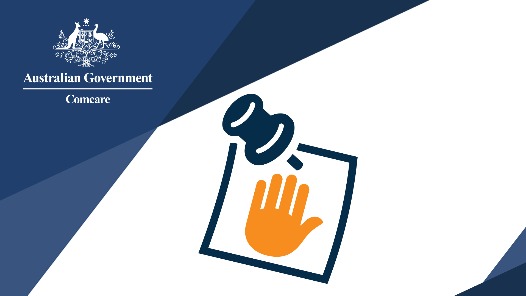Harassment including sexual harassment
Harassment is a harmful behaviour that creates a risk to health or safety and occurs when a person is treated poorly based on personal characteristics such as age, disability, race, nationality, religion, political affiliation, sex, relationship status, family or carer responsibilities, sexual orientation, gender identity or intersex status.
Comcare may be able to investigate if an employer is meeting their WHS obligations in relation to workplace harassment or if workers believe they have been discriminated against in regard to their employment for raising a health and safety issue.
Workers covered by Comcare can make an inquiry or seek advice by emailing whs.help@comcare.gov.au or calling 1300 366 979.
Sexual harassment
Stronger laws to prevent workplace sexual harassment
A ‘positive duty’ on employers and persons conducting a business or undertaking (PCBU) to take proactive and meaningful action to prevent workplace sexual harassment and discrimination came into effect in December 2022 through amendments to the federal Sex Discrimination Act 1984 (SDA). New regulatory powers for the Australian Human Rights Commission (AHRC) to investigate and enforce compliance with these obligations came into effect on 12 December 2023.
The positive duty under the SDA, and the AHRC’s compliance powers, do not change existing duties or regulatory functions in the Commonwealth work health and safety (WHS) jurisdiction.
Workplace sexual harassment is a known health and safety hazard that can cause psychological and physical harm. Under the Work Health and Safety Act 2011,PCBUs have a duty to eliminate or minimise the risks of workplace sexual harassment so far as is reasonably practicable. Comcare will continue to monitor and enforce compliance with the WHS laws in the Commonwealth jurisdiction parallel to the AHRC’s regulatory function under the SDA.
Comcare has developed a practical guide to help employers navigate the multiple referral pathways and to assist them to manage incidents of workplace sexual harassment.
According to the Fair Work Commission, “Sexual harassment is unwelcome conduct of a sexual nature in relation to a person. It occurs in circumstances where a reasonable person would anticipate the possibility of the person who is harassed being offended, humiliated or intimidated. Conduct of a sexual nature includes making a statement of a sexual nature to, or in front of, a person. The statement can be spoken or in writing.” For more information, visit Sexual harassment | Fair Work Commission
Sexual harassment includes unwelcome sexual advances, requests for sexual favours or other conduct of a sexual nature, causing offence, humiliation or intimidation to the person targeted.
Sexual harassment is a known workplace hazard that can cause psychological and physical harm. It is unlawful under the Commonwealth Sex Discrimination Act 1984 and is also prohibited by state and territory anti-discrimination laws.
In addition to the information and resources on this page, there are training and education products focused on the prevention, management and reporting of workplace sexual harassment.
Examples of sexual harassment can include:
- Unwelcome touching, hugging, cornering or kissing
- Inappropriate staring or leering
- Sexual gestures, indecent exposure or inappropriate display of the body
- Sexually suggestive comments or jokes
- Sexually explicit pictures, posters or gifts
- Repeated or inappropriate invitations to go out on dates
- Intrusive questions about a worker’s private life or physical appearance
- Inappropriate physical contact
- Being followed, watched or someone loitering nearby
- Requests or pressure for sex or other sexual acts
- Actual or attempted rape or sexual assault
- Indecent phone calls, including leaving sexually explicit messages on voicemail or an answering machine
- Sexually explicit comments made in emails, SMS messages or on social media
- Repeated or inappropriate advances on email, social networking websites or internet chat rooms
- Sharing or threatening to share intimate images or film without consent
- Any other unwelcome conduct of a sexual nature that occurred online or via some form of technology.
National guidance
The Australian Human Rights Commission has a range of resources available, including the Respect@Work website to support all workplaces in addressing sexual harassment.
- Respect@Work | Respect@Work (respectatwork.gov.au)
- Respect@Work: National Inquiry into Sexual Harassment in Australian Workplaces (2020)
- Ending workplace sexual harassment: A resource for small, medium and large employers
- Effectively preventing and responding to sexual harassment: A Code of Practice for Employers
- Recognising and responding to sexual harassment in the workplace: Information for employees.
Safe Work Australia has national guidance on workplace sexual harassment and accompanying guidance on workplace bullying.
- Preventing workplace sexual harassment
- Preventing workplace violence and aggression
- Preventing and responding to workplace bullying
- Dealing with workplace bullying - a worker's guide.
- Model Code of Practice: Sexual and gender-based harassment
Comcare resources
Comcare has regulatory and practical guidance to help employers, managers and supervisors, and workers prevent and respond to workplace sexual harassment and comply with their duties under the WHS Act.
- Workplace sexual harassment: Practical guidance for workers (PDF, 4.1 MB)
- Workplace sexual harassment: Practical guidance for managers and supervisors (PDF, 4.2 MB)
- Workplace sexual harassment: Practical guidance for employers (PDF, 4.1 MB)
- Regulatory guidance for employers on their work health and safety responsibilities (PDF, 1.7 MB)
These guides should be read in conjunction with Safe Work Australia’s national guidance on workplace sexual harassment.
Workplace Sexual Harassment National Forum
In 2021, Comcare hosted the Workplace Sexual Harassment National Forum - Influencing Positive Change.
Sex Discrimination Commissioner Kate Jenkins delivered the keynote speech while other expert speakers included Senator the Hon Michaelia Cash (then Attorney-General and Minister for Industrial Relations), Jodeen Carney (SA Commissioner for Equal Opportunity) and Michelle Baxter PSM (CEO Safe Work Australia). Watch the Forum recordings and download the speeches and factsheet.
Watch now
WHS duties
Employers and workers have duties and obligations under the WHS Act.
Employer duties
Employers must:
- Eliminate or minimise risks to the health and safety of workers and others, including sexual harassment, so far as is reasonably practicable.
- Provide workers with policies and procedures, training and supervision to ensure instances of sexual harassment are reported without fear, shame or ‘victim blaming’.
- Take appropriate action to respond to and manage incidents.
- Consult and cooperate with businesses that interact with their workers about measures to prevent sexual harassment.
Officer duties
Officers have a duty to exercise ‘due diligence’ to ensure the employer complies with its duties.
Due diligence requires officers to take a proactive role in ensuring their organisation has systems and procedures in place to meet its WHS obligations. Failing to exercise due diligence may attract significant personal liability for officers under the WHS Act.
Worker duties
Workers must take reasonable care that their acts or omissions do not adversely affect the health and safety of others, including co-workers. This includes:
- Not acting in a manner which would constitute sexual harassment
- Complying, so far as they are reasonably able, with any reasonable instruction given by the employer regarding workplace sexual harassment
- Cooperating with any reasonable policy or procedure relating to workplace sexual harassment that has been notified to them.
Prevention
Practical, early action employers can take to prevent workplace sexual harassment includes:
- Being aware of heightened risk factors such as power imbalances, isolated or remote work and poor workplace culture
- Identifying risks inside and outside the organisation
- Fostering a positive workplace culture of openness, trust and respect that is supported by sound policies, human resource practices and staff education and training
- Strong leadership through executives and senior managers exemplifying the types of behaviours and cultures that prevent workplace sexual harassment
- Adopting new and better approaches to workplace education and training that show workers how to prevent and respond to incidents of sexual harassment.
Further information is available in Comcare’s resources for:
Safe Work Australia has detailed national guidance on workplace sexual harassment and accompanying guidance on workplace violence and aggression:
Australian Human Rights Commission also provides a national enquiry services and guidance material:
- National Information Service
- Respect@Work: National Inquiry into Sexual Harassment in Australian Workplaces (2020)
- Respect@Work: National Inquiry into Sexual Harassment in Australian Workplaces Community Guide (2020)
Additionally, the Good Practice Indicators Framework for Preventing and Responding to Workplace Sexual Harassment is a tool released by Respect@Work to assist organisations to prevent and respond to workplace sexual harassment.
Impacts and risk management
Workplace sexual harassment can have significant social and economic impacts for workers, their families, their employers, and the wider community.
While this will depend largely on individual circumstances, the broad impacts for workers and employers can include:
- Psychological and physical harm
- Reputational damage
- Lost productivity
- Financial loss.
Examples of psychological and physical safety impacts for anyone who experiences or witnesses workplace sexual harassment can include:
- Feelings of isolation, social isolation, or family dislocation
- Loss of confidence and withdrawal
- Physical injuries as a result of assault
- Depression, anxiety, and stress
- Post-traumatic stress disorder (PTSD)
- Illness such as cardiovascular disease, musculoskeletal disorders, immune deficiency, and gastrointestinal disorders (for example, as a result of stress)
- Self-harm or suicide.
Comcare also recognises that navigating the separate but sometimes intersecting laws associated with workplace sexual harassment can be overwhelming. We can assist employers and individuals to understand the work health and safety duties and frameworks associated with workplace sexual harassment.
Practical information on the impacts of workplace sexual harassment is available in Comcare’s Regulatory guidance for employers on their work health and safety responsibilities (PDF, 1.7 MB).
Risk management
Employers must eliminate or minimise the risks of workplace sexual harassment, so far as is reasonably practicable. The risk management approach to prevent workplace sexual harassment should include:
- Identifying hazards; including the need to consult with workers when gathering information
- Assessing risks; based on the likelihood and consequence of sexual harassment in the workplace
- Controlling the risks; through a reasonably practicable and proactive approach, with consideration being given to matters such as:
- the physical work environment
- safe work systems and procedures
- third party sexual harassment
- addressing unwanted or offensive behaviour early
- reporting of incidents
- workplace behaviour policies
- information, instruction, training and supervision
- manager training.
Safe Work Australia’s guide on preventing workplace sexual harassment includes detailed information on identifying hazards and assessing risks.
Responding to incidents
Employers
If anyone in your workplace is in immediate danger, call 000 and report the matter to the Police. If workers are not in immediate danger and would like to make an enquiry or report, call the Police on 131 444.
Employers should ensure workers understand the reporting process and their reporting options – formal, informal and anonymous. The process and reporting options should be actively promoted at work and key workers (contact persons that receive reports) should receive training on supporting and advising complainants.
After an incident, employers should review their risk management systems to evaluate what worked and what could be improved.
Some workers who experience or witness workplace sexual harassment choose not to report straight away. If they do report, employers should take steps including:
- Acting quickly to communicate and document the incident and reporting process, and sharing available options for support and representation
- Protecting the privacy and confidentiality of everyone involved and protecting all parties from victimisation.
Workers
Workers who experience or witness workplace sexual harassment should report it and seek support from the employer. They should still have access to support even if they choose not to report.
Other options include:
- Call out the behaviour and ask the instigator to stop.
- Talk to the person experiencing harassment to see what support they need.
- If workers are not ready to make a formal complaint, keep a record of what happens, including when it occurred and where, who was involved and anything else that may be important to ensure its documented.
- Apply to the Fair Work Commission for an order to stop sexual harassment at work: see Sexual harassment benchbook | Fair Work Commission
- Workers can also make a complaint to the Australian Human Rights Commission or relevant state or territory antidiscrimination body. A solicitor advocate or union can also make a complaint to the Commission on their behalf.
- Comcare may be able to investigate if an employer is meeting their WHS obligations in relation to workplace sexual harassment or if workers believe they have been discriminated against in regard to their employment for raising a health and safety issue. For workers covered by Comcare, workers can make an inquiry or seek advice via whs.help@comcare.gov.au or call us on 1300 366 979.
- If anyone is in immediate danger, call 000 and report the matter to the Police.
- If workers are not in immediate danger and would like to make an enquiry or report, call the Police on 131 444.
Leadership and workplace culture
Building a positive workplace culture starts with strong leadership. Executives, board members and senior managers should model and enforce acceptable behaviours that align with workplace policies to prevent sexual harassment and set a standard that addresses inappropriate behaviour early, and ideally before it escalates.
Workplace policy and reporting
Workplace policies are important in defining the standard of behaviour expected of workers, customers, clients and third parties. The policies should provide clear guidance around acceptable behaviours and attitudes, controls and consequences, actions and reporting, and support and referrals for workers that experience or witness sexual harassment.
Managers and supervisors can support prevention by:
- Promoting their organisation’s sexual harassment policy and ensuring workers receive information and training about their rights, obligations and reporting pathways.
- Setting a strong example of the types of behaviours and attitudes that create a healthy and safe work environment based on respect.
- Building a culture of openness, trust and respect to help minimise the risk of sexual harassment and support incident reporting.
- Being aware of enablers to sexual harassment including power imbalances, low workforce diversity (that is, gender imbalance) or isolated working environments.
- Identifying risks and developing an understanding of what actions to take to reduce or eliminate them, so far as reasonably practicable.
Harassment including sexual harassment has been identified as a hazard in the Model Code of Practice: Managing psychosocial hazards at work.
This guidance will help you meet your obligation under the Work Health and Safety Act 2011 and the Work Health and Safety Regulations 2011.
Training on psychological health and safety
Training on mentally healthy workplaces
We provide training through our learning management system called Comcare LMS.
To access our training, you first need to create an account in Comcare LMS (see the steps to create an account). Then, select the training item that you are interested in and login with your email and password.

Mode:
Cost:

Mode:
Cost:

Mode: Micro-learn Self-paced
Cost: Free
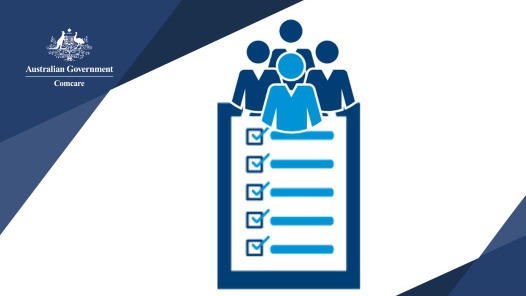
Mode: Self-paced Micro-learn
Cost: Free

Mode: Calendar and In-house
Cost: Paid

Mode: In-house
Cost: Paid
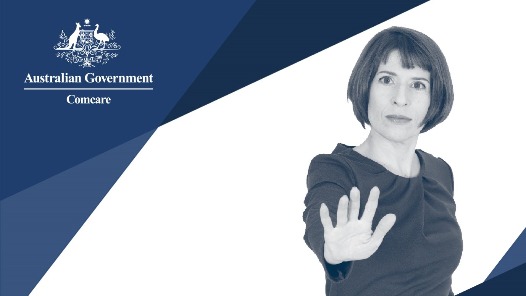
Mode: In-house
Cost: Paid

Mode: Self-paced
Cost: Free

Mode: Micro-learn
Cost: Free

Mode: Micro-learn
Cost: Free
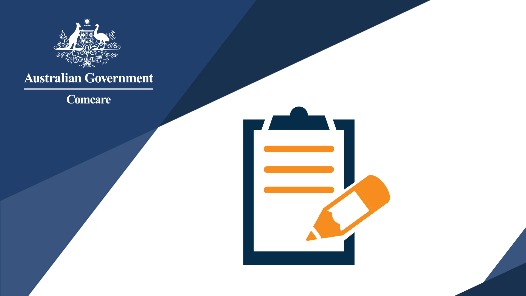
Mode: Micro-learn
Cost: Free

Mode: Self-paced
Cost: Free
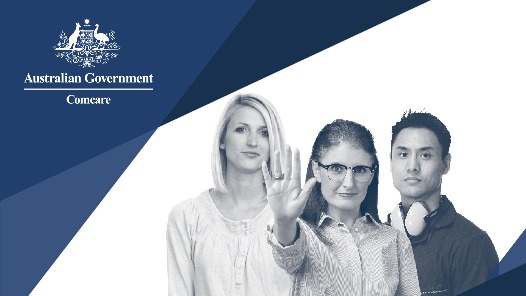
Mode: Self-paced
Cost: Free

Mode: Self-paced
Cost: Free

Mode: Self-paced
Cost: Free

Mode: Self-paced
Cost: Free

Mode: Self-paced
Cost: Free

Mode: Presentation
Cost:
For more information about the training we offer, see Training and learning.

